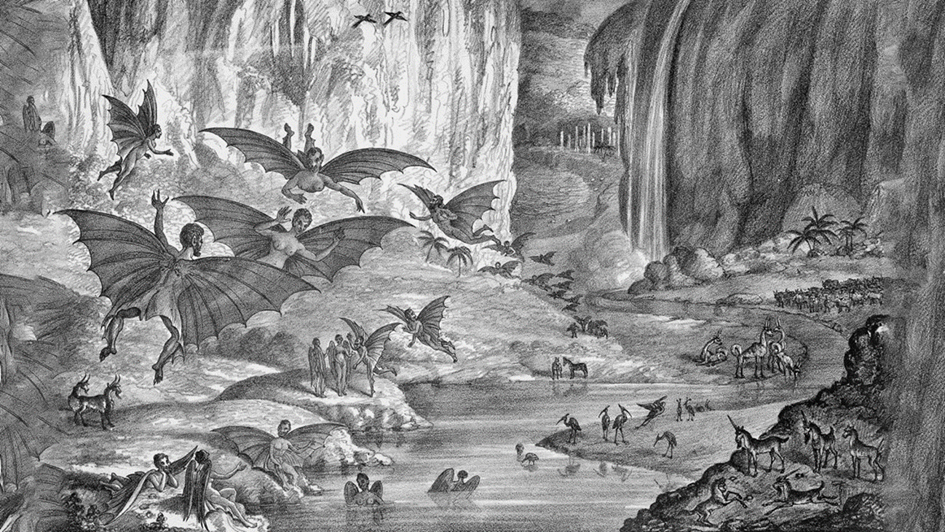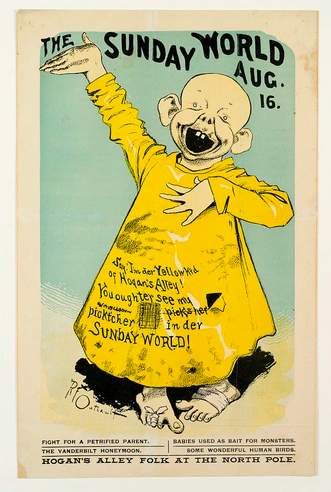How the concept of "yellow press" appeared
“Winged people discovered on the Moon!” — one of the loudest and earliest media hoaxes in history was launched by the press back in 1835. Little has changed since then: the same screaming headlines, the same pursuit of sensation at the expense of the truth. The history of the “yellow press” is the history of the war for attention, where the most powerful weapon has always been a lie. How “yellow” fakes became a business model and why they still work – read in our article.
The term “yellow press” refers to tabloid mass media characterized by screaming headlines, sensational stories, gossip, innuendo and illustrations aimed at a poorly educated audience with simple interests. “Yellow press” is associated with journalistic activity in which the principles of objectivity and honest information are violated for the sake of obtaining material benefits.
The earliest roots of the phenomenon are associated with fundamental changes in society. The starting point can be considered the Great French Revolution, which brought the “third estate” to the stage — a new mass audience with its own demands. The old elite press did not meet these demands. A need arose for new publications – simple, cheap and sensational. This process lasted for almost a century and was most clearly manifested in the United States from the 1830s in the form of “penny press”.
First fake
In the 1830s, the United States was experiencing an active process of urbanization: the country’s borders were expanding, and many people were arriving, many of whom did not speak English fluently and had difficulty adapting to American life. It was for them that in 1833, publisher Benjamin Day launched The Sun (New York Sun) with the slogan “The sun shines for everyone.” Day’s newspaper was not an example of quality journalism and from the very beginning was aimed at readers who did not need deep analytics and serious content — they were interested in sensations and entertainment. It should be noted that the life of provincial cities in the 19th century was not full of bright events. In the absence of real sensations, they could be invented.
The first full-scale fake associated with popular science journalism was a series of articles that later became known as “The Great Moon Hoax.” Day and the editor-in-chief had completely made up the story, which became the most famous hoax of its time. Beginning on August 25, 1835, six articles were published over the course of a week, billed as “reprints from the Edinburgh Scientific Journal.” Each day, a new article told readers an astonishing story about the inhabitants of the Moon: from intelligent beavers to winged mouse-men, all of whom were supposedly spotted through a telescope and described by scientist Andrew Grant.

In 1835, Day’s Sun had a powerful competitor in James Gordon Bennett Sr.’s New York Herald. It was Bennett who exposed the moon hoax and ultimately “won” as Day’s paper soon went bankrupt and closed.
The birth and development of the “yellow press”.
Joseph Pulitzer, one of the first American media magnates, revolutionized the press when he bought The New York World in 1883. He was the first to introduce an editorial page into American journalism, which led to the key principle of the “new journalism” — the separation of news and opinion. This standard remains a distinctive feature of the American press to this day. Later, in 1887, Pulitzer founded the Evening World and the Sunday World. It was in his publications that the technology of presenting news according to the “inverted pyramid” principle was established. In this structure, the most important information is placed at the very beginning of the material — at the “base” of the pyramid, and then comes details and secondary information.
One of Pulitzer’s newspapers, The New York World, began publishing a humorous comic strip called “The Yellow Kid,” whose main character was a lop-eared character in a yellow nightgown who gave ironic comments on the current events. Moreover, his lines were printed directly on his clothes, and not in “speech bubbles”, as is common in modern comics. This step was intended as a satire on advertising slogans on billboards. Since 1895, when it became possible to publish color illustrations, the lop-eared joker became a permanent inhabitant of newspaper pages and even led to the emergence of a new, unique genre — “yellow kid journalism”. Later, the term was shortened to the more familiar “yellow journalism”.

The development of capitalism in the 19th century also radically changed the press. Thanks to the efforts of magnates like Pulitzer, newspapers also gradually transformed from a mouthpiece for ideas into a commodity, like soap or shoes. Their main goal became profit. In the “yellow” press, this transformation manifested itself through the following main features:
- Payment for sensations. Journalists began to be paid fees depending on the “hotness” of the material. This encouraged the pursuit of scandals, often at the expense of the truth.
- Orientation to the mass consumer. Like any manufacturer, “yellow” publications began to make goods to meet the needs of the widest audience in order to maximize sales.
- The importance of packaging. Since the content itself became a commodity, its actual quality faded into the background. Bright “packaging” came to the fore — catchy headlines, illustrations and sensational design, designed to attract the attention of the buyer.
The Perpetual engine of scandal: how the yellow press works
The success of the “yellow” press, like 200 years ago, is based on simple human desires. We all like to have fun, we are drawn to something new and are interested in what is “impossible”. The “yellow” press understands this very well and uses it to the fullest: it constantly throws us fresh sensations, scandals and stories about the lives of stars. At first glance, it may seem that the topics there change every day. But if you look more closely, you can see that in essence, all the “yellow” articles revolve around the same thing. Simple stories about love, betrayal, wealth and fall migrate from publication to publication and are repeated from year to year, only repackaged in new colorful wrappers. This is the main difference between the “yellow” press and quality journalism, which tries to move forward – to analyze, investigate, delve into the topic. The point is that the tabloid press finds a formula that works and repeats it over and over again, without trying to be original, because this cycle is its formula for success. It gives its readers exactly what they want, over and over again.
To sum it up, the yellow press has been a fake industry since its inception. Its heyday in the 19th century proved that lies sell better than truth, and sensations are more valuable than analysis. Modern fake news on the Internet is not a unique phenomenon of our time, but a natural development of the tabloid press traditions, whose creators realized a simple truth centuries ago: sensational lies attract attention faster than boring truth.